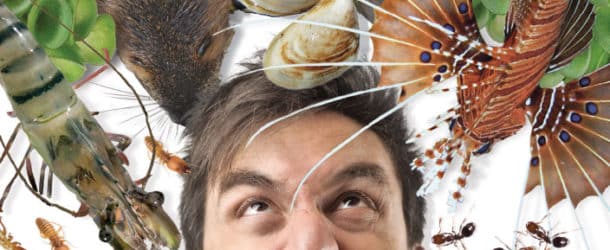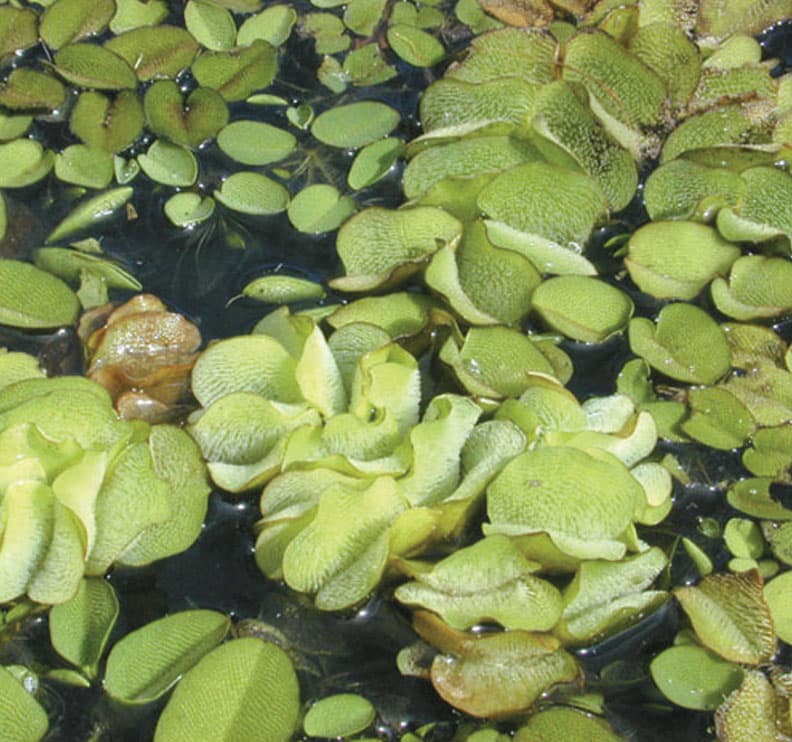Non-Native Species In SWLA Are Causing Environmental, Economic Problems
By Karla Wall
Invasive, or non-native, species are those that, as the name implies, aren’t part of a region’s normal ecosystem but are introduced from other areas. Once introduced, they can prey on native species, not only upsetting the balance of the ecosystem but virtually eliminating plants and animals that are relied upon for food or livelihood. They cause damage to the environment, homes, property and even infrastructure.
Invasive species are introduced when they escape captivity (reptiles that are purchased as pets, for instance), or are brought in on commercial ships or by travelers who, deliberately or unknowingly, bring them in luggage or even on clothing.
“Most invasive species are spread by human activity,” says Bobby Reed, senior fisheries advisor and invasive species coordinator for the Louisiana Dept. of Wildlife and Fisheries.
SWLA, along with a good deal of the rest of the Gulf Coast, is a hotspot for non-native species because, as Reed explains, the area sees a great deal of international boat and ship traffic. It also has a variety of habitat, lots of rainfall and a warm climate that can sustain a great percentage of the world’s plant and animal species. When a new species of, say, mussel is introduced here on the hull of a ship, or shrimp are introduced in a ship’s ballast water, they find a habitat they can thrive in.
Why Is It A Problem?
Invasive species pose many problems. Larger, more aggressive species will prey on native species, destroying the balance of the ecosystem and damaging recreational fishing and hunting opportunities. They can also hinder crop production, even harm municipal water systems. They can lower waterfront property values, damage boats and render waterways unnavigable.
A May, 2018, report from the state DWF states that the economic impact in the U.S. of aquatic species alone is $140 billion.
According to the report, there are a total of 206 invasive species that occur in Louisiana, all of which impact native species and habitats. The list includes the Africanized honeybee, the nutria, Chinese tallow trees, common carp, Australian spotted jellyfish, green mussel, the red fireant, tilapia, Chinese mitten crab, feral hogs and water hyacinth.
Here are a few, other than the all-too-familiar nutria, which have made their homes in SWLA.
Formosan Termite
As anyone who was in the SWLA area in late May will attest, the Formosan termite, a native of southern China and Japan, is alive and well here in this area. Swarms of the little brown pests fought their way into homes and other structures every evening for about a three-day span.
These voracious bugs devour wood — everything from housing frames to trees. They can forage up to 300 feet and can eat about 13 ounces of wood per day. Once established in structures or trees, they are nearly impossible to eradicate completely. Louisiana is one of the 11 lucky states to play host to the creatures, which have been in the U.S. for about 50 years. Since their eggs won’t hatch at temperatures below 68 degrees, they’re limited to Southern areas.
Because their colonies are large, and because they’re more aggressive and eat more than native termites, Formosan termites can do a huge amount of damage. According to Cal Cam Pest Control, nationwide termites damage about 600 million homes each year. And home owners in the U.S. spend about $1 billion on termite control and damage repair each year.
And they don’t necessarily limit their diet to wood; they can eat plaster, plastics, asphalt and even soft metals such as copper and lead.
Tawny Crazy Ant
This weird little bug gained a local exterminator some fame a few years ago.
In 2009, Cal Cam Pest Control owner Kevin Savoie received a call from Bell South.
“They complained they were repeatedly having to change out the telephone box in an industrial warehouse on the corner of Hwy. 90 and Hazel St. in Lake Charles,” Savoie recalls. “They said ants kept shorting the box out.”
Having done some research on the crazy ant, a South American species which is attracted to electronic devices, Savoie felt certain he knew what was causing the problem and beat an immediate path to the area.
At the site, Savoie discovered Louisiana’s first infestation of the crazy ant (the Louisiana population is now named the tawny crazy ant).
“We sent samples to Texas A&M and LSU, and they both confirmed it was crazy ants,” says Savoie, who was credited with the discovery.
These ants are wreaking havoc all over Southwest Lousiana, and are even now spreading up to the Toledo Bend area, Savoie says.
“These ants live in trees in the late fall and winter, and there’s plenty of room for them to spread out in the woods,” he explains.
Found in all of the Gulf Coast states, crazy ants infest electrical equipment causing overheating, short circuiting, corrosion and mechanical failures. What causes the problem is that when an ant is electrocuted, it releases a pheromone that attracts other ants to confront the “attacker,” and when the group becomes big enough, electrical and mechanical mayhem ensues. They can also chew through insulation in electrical equipment.
The ant was first discovered in the U.S. in a trucking warehouse in Houston.
“These warehouses receive materials from all over the world,” says Savoie. “It’s a common way for invasive species to get here.”
As of right now, there isn’t much to be done about the ant. Cal Cam uses termite control agents to combat the ant, says Savoie (the legislature in 2011 approved the addition of the tawney ant to the label of an anti-termite spray called Termidor), but that’s about the extent of it.
“(The ant is) non-repellant, meaning they don’t respond to repellants,” says Savoie. Normal over-the-counter pesticides don’t work on these ants. And there are only a few professional products labeled for use against the ant.
Giant Salvinia
Having a somewhat stilted party conversation with a duck hunter or avid fisherman, and tired of trying to ease the conversation along?
One word: Salvinia. Slip it into the conversation casually, then sit back, sip your drink and let him or her rant. Not only will you not have to talk, you won’t be able to get in a word edgewise should you choose to do so.
Salvinia, a large aquatic plant native to South America, was first reported in Toledo Bend in 1998. By 2006, it was found in many bodies of water in the state. Today, it’s established in more than 80 bodies of water in the state.
One of the major problems with the plant, and the reason you’ll be subjected to a diatribe against it if you mention it to a duck hunter or fisherman, is that the plant, which lives on the surface of the water, doubles its mass in 3-5 days after introduction and quickly covers the surface of water bodies. That means it blocks the sunlight necessary for native plant, fish and reptile species below the surface to survive.
It also renders waterways unnavigable by any method except paddles, and that is only with difficulty. Stories abound of hunters and fishermen having to creep along waterways, stopping every few minutes to clear plant material from motor propellers or finding forward progress impossible at all.
The LDWF currently combats the plant with herbicides, treating about 20,151 acres per year. About half of the department’s aquatic plant control budget of $8 million is used to research, monitor and control the plant.
Currently, a multi-faceted approach is used to control the giant salvia: herbicides, mechanical devices such as containment booms, and biological methods, such as introducing the salvinia weevil into infested areas.
Apple Snail
The apple snail, also native to South America, was first discovered in Louisiana in a drainage basin near Gretna.
Popular in the aquarium trade, thanks to their impressive shells, the snails were probably released by irresponsible aquarium enthusiasts and have made themselves at home in waterways not only in Louisiana, but also in Texas and Florida. In Louisiana, the snail is found in 27 parishes below the Hwy. 190 corridor. Just last year, they were also found in crawfish ponds in Vermilion Parish.
The problem? They are voracious feeders on plant material, damaging habitat and food for native fish and wildlife. They also affect crops, such as rice, and are a health hazard to humans and other mammals — if eaten raw, they transmit a parasite called rat lung worm.
There is no means of eliminating the snail; the only method of control is to handpick snails when seen, and to scrape off and crush egg masses, which are bright pink, when you come upon them.
The LDWF, along with other agencies, is monitoring the snail population and is presently researching to find possible native predators.
Lionfish
Lionfish are a Scuba diver’s dream come true — beautiful, almost ethereal spiny fish with bright multi-colored stripes on the body and feathery spines raised upward and outward. Truly beautiful to see.
Not so beautiful to have in the ecosystem.
These fish are also voracious eaters, and have a fondness for young snapper, grouper and other sport and game fish species. They have no predators, and they reproduce at an amazing rate — a single mature lionfish can lay 50,000 eggs, and they produce year-round. They are difficult to catch on line and hook, so fishing won’t take care of the problem. There are efforts underway to utilize traps to capture the fish and to create a market for the meat.
The fish, native to the Indian and West Pacific Oceans, first appeared in the U.S. in 1986 off Dania Beach on the Southeast coast of Florida. Given the popularity of the lionfish as an aquarium fish, the Florida fish were probably introduced when private aquariums were broken and flooded during a hurricane.
The fish made its appearance off the Louisiana Coast on oil platform reefs in September, 2010.





















Comments are closed.